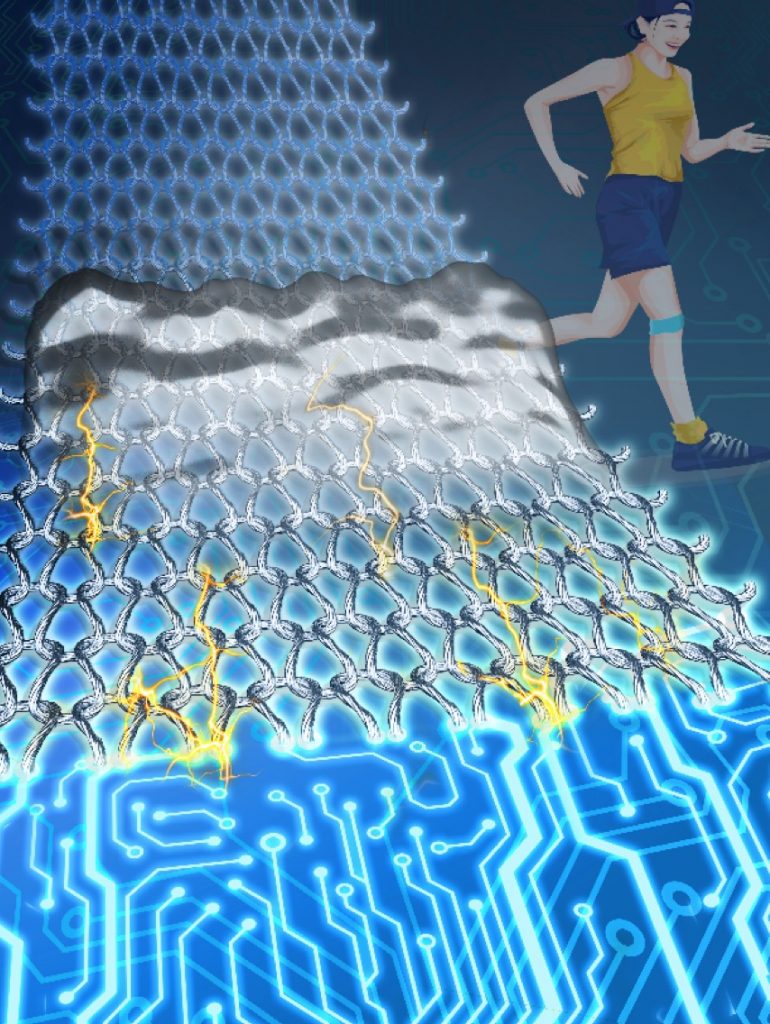

Wearable Electronic Fabric
The next-generation electronics thrive on the emergence of wearable technologies. Smart wearable devices that could be integrated with the human body to monitor the physiological activity or enhance the function of the human body have emerged as one of the technologies with the most potential in the future society.
Textiles which are indispensable in our daily life have been used for thousands of years due to their lightweight, flexible, permeability and durable features. Beyond the common use of fabric as clothes, covering or decoration materials, the integration of traditional textile technology and burgeoning electrical engineering, known as e-textile, has been rapidly exploited in evolving fields of electronics, sports, medical science and artificial intelligence.
In a recent paper published in Advanced Electronic Materials, researchers from the Institute of Chemistry, Chinese Academy of Sciences, reported the textile-based stretchable sensor by electronic dyeing method for human motion monitoring and analysis. By integrating the traditional dyeing technology and electronic engineering, a stretchable conductive fabric that could in real time response to the different stress of human body during the motion with an electronic signal output.
With specific silver precursor selection and process optimization, the silver ion in the reactive precursor was in-site reduced into silver nanocrystals and firmly attached on the fiber surface of the textiles. The uniform and dense silver absorption and coverage contribute the conductive performance of the textiles. The stretch of the textiles will bring about the electronic conductivity change and could output different signals with the help of the recorder. Moreover, the authors regulated the texture of the textile to match with the different amplitude of stress for satisfying the various gentle and vigorous motions of the human body. Thus, the conductive textiles show good flexibility and adaptable strain-electric response.
Owing to the commendable mechanical performance and high durability of the textile matrix, the electronic textile sensor could capture and monitor various human activities by attaching on the motion of joints in the human body, from the gentle finger touch to the vigorous running. With certain statistical analysis of the output signal, the attached sensor array could not only monitor simple motions, such as walk, jog, squat, jump and extend, but also could effectively distinguish the similar motions, which have great potential in biomonitoring, soft co-robotics, and human-machine interaction.
The work is led by Prof. Yanlin Song and finished by his graduate students Yudong Li, Yanan Li, and Dr. Fengyu Li at the Institute of Chemistry Chinese Academy of Sciences. The study, Electronic Textile by Dyeing Method for Multiresolution Physical Kineses Monitoring was recently published in the journal Advanced Electronic Materials. (Science Trends)

86-10-68597521 (day)
86-10-68597289 (night)

86-10-68511095 (day)
86-10-68512458 (night)

cas_en@cas.cn

52 Sanlihe Rd., Xicheng District,
Beijing, China (100864)

